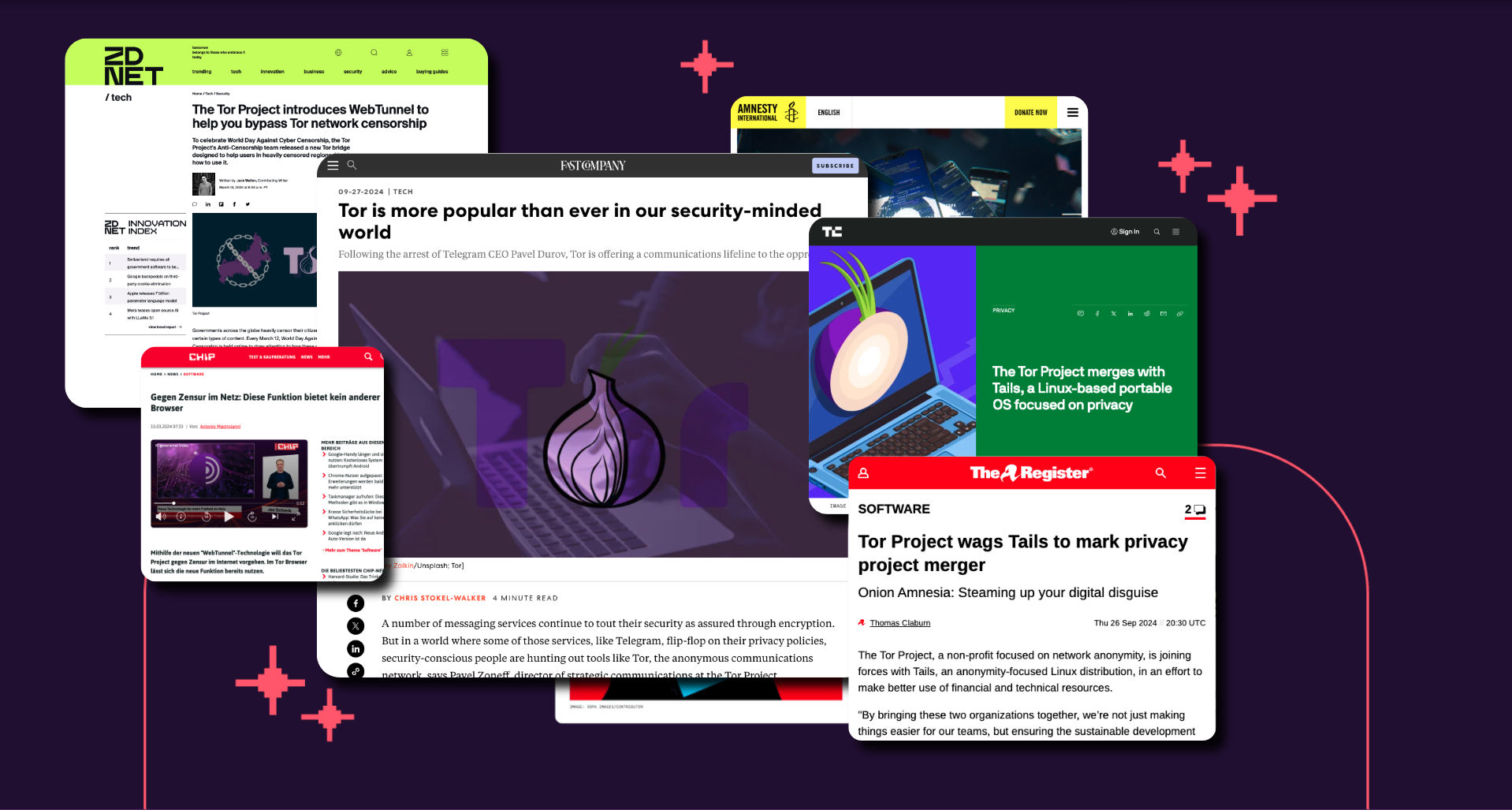2024: Year in Review

As we reflect on the past year, let's review the progress we've made on some of our most important projects.

As we reflect on the past year, let's review the progress we've made on some of our most important projects.

As the Russian government intensifies its grip on the internet, censorship circumvention tools like Tor are more critical than ever. Here's the latest on Tor censorship in Russia and how you can help by running WebTunnel bridges.

Over the last few weeks, the Tor Project and relay operators received abuse complaints regarding alleged port scanning activity from their servers. Thanks to a collaborative effort, the source of the spoofed packets has been identified and shut down.

This blog post is a response to an investigative news report about a large-scale law-enforcement attack that managed to de-anonymize a user of an old version of the long-retired app Ricochet. This blog post aims to provide insight into what we know so far. Nothing that the Tor Project has learned about this incident suggests that Tor Browser was attacked or exploited. Tor users can continue to use Tor Browser to access the web securely and anonymously.

As we bid farewell to 2023, we reflect on the hard work of the Tor Project's teams and their many noteworthy achievements to improve Tor and its experience for millions of users all around the world. Thank you to our community of users, volunteers, relay operators, partners, and donors for making these projects possible through their generous contributions.

In this blog post, we want to reaffirm our commitment to keeping Tor free and provide insight into the rationale behind the recent removal of certain bad relays.

Today, we are officially introducing a proof-of-work (PoW) defense for onion services designed to prioritize verified network traffic as a deterrent against denial of service (DoS) attacks with the release of Tor 0.4.8.

Why Tor is slow right now and what we are doing about it.

Tor Project is participating once again in Google Summer of Code in 2022. Starting in June we will have two OONI projects and one project for helping the Tor's network health.

Tor has released 0.4.7.7, the first stable Tor release with support for congestion control. Congestion control will result in significant performance improvements in Tor, once Exit relays upgrade. Relay operators: please read!